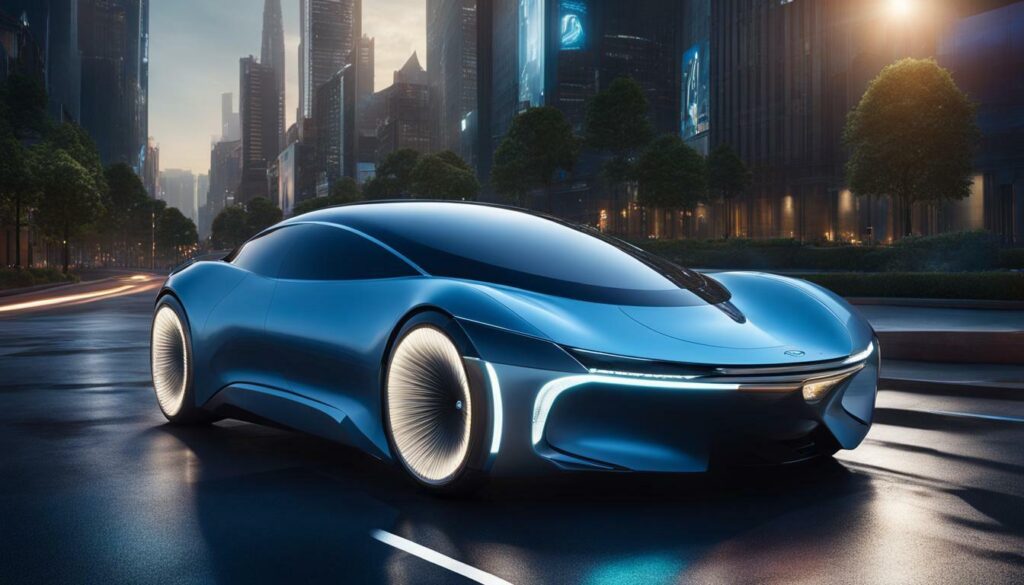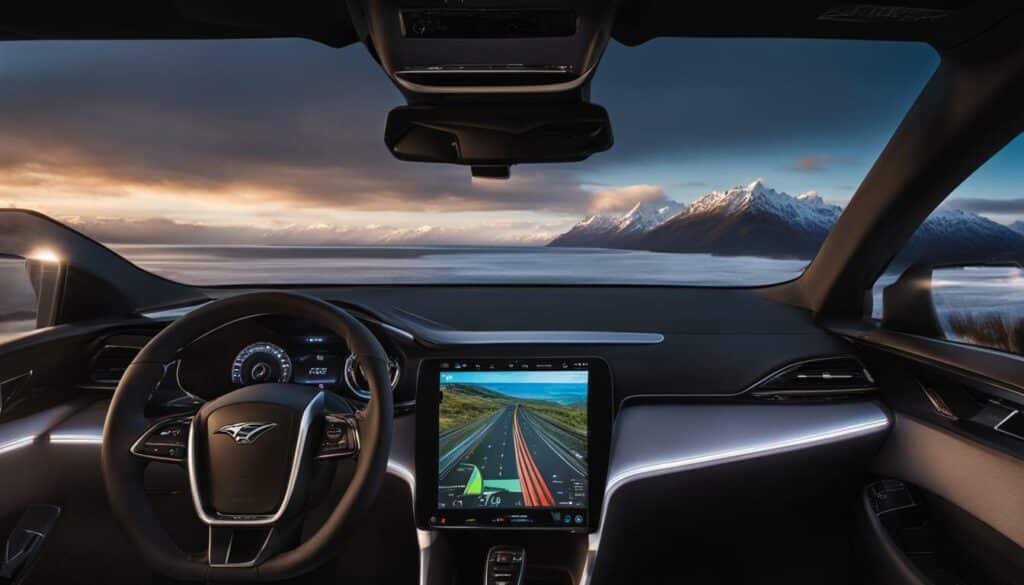As a journalist covering the automotive industry in New Zealand, I have seen firsthand how technology has transformed modern vehicles. From GPS navigation to advanced safety features, vehicles are becoming more connected and intelligent than ever before. In this section, we will delve into the integration of technology in modern vehicles from a New Zealand perspective.
- New Zealanders are adapting to new technologies in their vehicles, making their driving experience more efficient and enjoyable.
- The integration of technology has led to smarter and safer vehicles with advanced features such as GPS navigation and infotainment systems.
- Vehicle automation technology such as autonomous driving and lane-keeping assist systems are emerging as the future of driving.
- The New Zealand perspective on vehicle integration takes into account factors such as infrastructure, government regulations, and consumer preferences.
- The New Zealand automotive market presents unique challenges and opportunities for the integration of technology in vehicles.
The Evolution of Automotive Technology
Automotive technology has come a long way since the first vehicle was invented over a century ago. From simple mechanical components to advanced computer systems, modern automobiles are a testament to the incredible strides made in automotive technology. With the advent of technology, automobiles have become more efficient, safer, and more comfortable for drivers and passengers alike.
Over the years, the most significant advancements in automotive technology have been in the areas of safety, entertainment, and communication. Safety features such as airbags, seat belts, and antilock brakes have become standard in most vehicles. Entertainment systems such as GPS navigation and infotainment systems have also become increasingly common in modern automobiles. Additionally, communication technologies such as Bluetooth and Wi-Fi have made it easier than ever for drivers to connect their devices to their vehicles.
One of the most notable advancements in automotive technology has been the implementation of various driver-assist technologies. Adaptive cruise control, lane-keeping assist, and automatic emergency braking are just a few of the features that have helped drivers stay safe on the road. These technologies have not only improved safety but have also made driving more enjoyable for many people.
The future of automotive technology is promising, with continued advancements in electric and autonomous vehicles. It is no longer a question of if vehicles will become autonomous, but rather when. The integration of artificial intelligence and machine learning into vehicles is expected to revolutionize the automotive industry and transform the way we travel.

As technology continues to evolve, automotive technology will continue to improve. We will likely see more advanced safety features, improved efficiency, and even more entertainment and communication options for drivers and passengers. It is an exciting time to be a part of the automotive industry, and I am excited to see what the future holds.
Vehicle Automation: The Future of Driving
As technology continues to evolve, the concept of vehicle automation is becoming increasingly more prevalent. Automated systems in vehicles offer a range of benefits, from improved safety to greater efficiency and enhanced convenience.
Autonomous driving is one area of vehicle automation that has garnered significant attention in recent years. Vehicles equipped with this technology can operate without human input, making driving safer and less stressful for drivers. Adaptive cruise control and lane-keeping assist systems are other examples of automated technologies that can reduce driver workload and increase safety.
Despite the potential benefits of vehicle automation, there are also several challenges to consider. One of the main concerns is the ethical considerations surrounding automated driving. For example, in the event of an unavoidable accident, how should an automated vehicle decide who to protect?
Another challenge is the need for infrastructure to support vehicle automation. Roads, signs, and signals must be adapted to ensure that automated systems can operate safely and efficiently. Government regulations must also be updated to ensure that automated vehicles comply with safety standards and other requirements.
Despite these challenges, vehicle automation has the potential to revolutionize the way we drive. By reducing the workload on drivers and making vehicles safer and more efficient, it could transform the New Zealand automotive market in significant ways.

“Automated systems in vehicles offer a range of benefits, from improved safety to greater efficiency and enhanced convenience.”
The New Zealand Perspective on Vehicle Integration
When it comes to vehicle integration, New Zealand presents a unique market with its own set of challenges and opportunities. In recent years, New Zealanders have shown a willingness to embrace new technologies in their vehicles, but adoption and adaptation can vary depending on factors such as infrastructure, government regulations, and consumer preferences.
One such example is the integration of electric vehicles into the New Zealand automotive market. While the government offers incentives such as rebates and tax exemptions to encourage adoption of electric vehicles, limited charging infrastructure in some regions can still act as a barrier to widespread adoption.
Additionally, the rugged terrain and variety of driving conditions in New Zealand present challenges for technology integration. Features such as adaptive cruise control and lane-keeping assist may not be as effective on winding, narrow roads compared to straight highways.
Despite these challenges, there are also significant opportunities for technology integration in New Zealand. The country’s small size and high average income provide a market that is receptive to premium vehicles with advanced features.
Furthermore, the New Zealand government has set a target for the country to have zero carbon emissions by 2050, which presents an opportunity for the integration of alternative fuel vehicles and hybrid technologies.
In conclusion, the New Zealand perspective on vehicle integration offers valuable insights into how technology is transforming the driving experience in this unique market. While challenges such as infrastructure and varying driving conditions exist, there is also significant potential for innovation and growth in the New Zealand automotive market.

In New Zealand, the integration of technology in modern vehicles is rapidly changing the driving experience. With advancements in automotive technology, vehicles are now smarter, safer, and more connected than ever before. As technology continues to evolve, New Zealanders are adopting and adapting to new features in their vehicles, improving efficiency and safety on the roads.
One of the unique aspects of the New Zealand automotive market is its infrastructure. With a mix of urban and rural areas, the country presents unique challenges for vehicle technology integration. However, New Zealanders have shown a willingness to embrace new technology, particularly when it comes to safety features. Manufacturers have responded to this demand by incorporating features such as lane departure warning and automatic emergency braking into their vehicles.
Government regulations also play an important role in shaping the automotive industry in New Zealand. The government has set fuel efficiency targets for manufacturers, encouraging the adoption of hybrid and electric vehicles. In addition, the introduction of initiatives such as the Clean Car Discount have incentivized the adoption of low-emission vehicles.
Despite these advancements, there are still challenges to overcome in integrating technology in vehicles in New Zealand. With a relatively small market, manufacturers may be less likely to invest in developing technology specifically for the New Zealand market. Furthermore, the high cost of new vehicles may deter some consumers from upgrading to newer, more advanced models.
However, the overall trend in the New Zealand market is towards greater integration of technology in vehicles. As autonomous driving technology continues to develop, there is potential for significant changes to the way we drive, particularly in urban areas. With the right infrastructure and government support, New Zealand has the potential to be at the forefront of the shift towards vehicle automation.
In conclusion, the New Zealand perspective on vehicle integration offers valuable insights into the future of the automotive industry. As technology continues to advance, vehicles will become even smarter, safer, and more efficient. By embracing these advancements, New Zealanders can enjoy the benefits of safer, more efficient, and more enjoyable journeys on their roads.
FAQ
What are some examples of technology in modern vehicles?
Examples of technology in modern vehicles include GPS navigation systems, infotainment systems, advanced safety features such as lane-keeping assist and adaptive cruise control, and connectivity options for smartphones and other devices.
How has technology transformed the automotive industry?
Technology has transformed the automotive industry by improving vehicle efficiency, enhancing safety features, and providing advanced convenience and entertainment options for drivers and passengers. It has also paved the way for the development of autonomous driving and other innovative advancements.
What are the benefits of vehicle automation?
Vehicle automation offers benefits such as improved safety through features like autonomous emergency braking and adaptive cruise control, reduced driver fatigue on long journeys, and the potential for increased fuel efficiency and reduced traffic congestion in the future.
What challenges are associated with vehicle automation?
Some challenges associated with vehicle automation include the need for consistent infrastructure and regulations, potential cybersecurity risks, and ensuring that drivers are prepared to handle situations where manual driving may be required. There are also ethical considerations regarding liability and decision-making in automated vehicles.
How are New Zealanders embracing technology in their vehicles?
New Zealanders are embracing technology in their vehicles by adopting features such as GPS navigation and infotainment systems, as well as advanced safety features. There is also growing interest in electric vehicles and the use of alternative fuels as part of the country’s commitment to sustainability.
What unique challenges and opportunities does the New Zealand automotive market present for technology integration?
The New Zealand automotive market presents unique challenges and opportunities for technology integration due to factors such as its diverse and often remote terrain, the need for reliable charging infrastructure for electric vehicles, and the opportunity to leverage technology to enhance road safety in rural areas.
How is the integration of technology in modern vehicles benefiting drivers in New Zealand?
The integration of technology in modern vehicles benefits drivers in New Zealand by providing them with safer and more efficient journeys. Advanced safety features help to reduce the risk of accidents, while connectivity options and infotainment systems enhance entertainment and convenience on the road.




